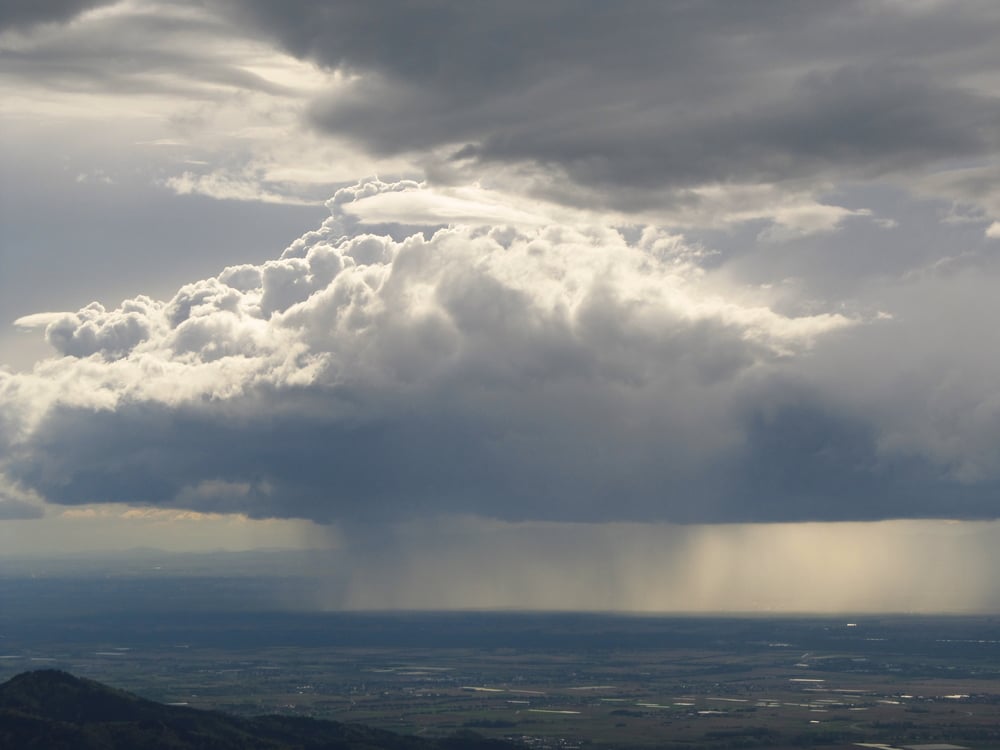David Sands from Montana State University conceptualized the idea of bacteria making rain. While were are familiar with the idea of precipitation, how true is his theory on bioprecipitation?
In Meteorology, bioprecipitation refers to the nucleation of ice by bacteria in clouds. This process then results in snow or rainfall. Apparently, the sky isn’t a sterile void. It is teeming with bacteria that is vital for plants’ growth.
Bioprecipitation
In 1982, a plant sciences and plant pathology professor at Montana State University, David Sands, discovered the bioprecipitation cycle. The process explains how bacteria play a huge part in the process of precipitation via ice nucleation. (Source: Hardy Diagnostics)
The process of bioprecipitation starts when bacteria form colonies on the surface of plants. Then, the ice crystals form around these colonies as the wind carries them into the atmosphere. Water molecules soon will clump on the crystals, and once they are big enough, the ice crystals fall to the ground in the form of rain.
The cycle is completed once the bacteria return to the land and ultimately grows colonies on the surfaces of plants, repeating the process. Sands, together with Foreman, Morris, and Christner, examined this phenomenon in different regions. They tested areas within Montana and even as far as Russia and discovered that the most active ice nuclei for this process were bacterial in nature. (Source: Eurekalert)
Dust and soot can serve as ice nuclei, but bacteria, which is biological, can cause ice nucleation from within. This means that bioprecipitation can be accomplished in warmer temperatures because ice nucleation is not purely dependent on the weather conditions. To add to this, rain-making bacteria are more efficient at forming ice nuclei because of their larger size and surface area.
Minerals can only orient a few water molecules, but bacterial proteins are big and can orient many simultaneously. Sands’ investigation led the group to believe that the most known ice-nucleating bacteria are associated with plants, and some are actually capable of causing plant-related diseases.
Sands’ group was able to prove this in a simple experiment. The group treated 28 tons of wheat seeds with a copper bactericide and planted them in 400 hectares of dry land during spring in Montana. They flew above the fields during rainstorms, holding Petri dishes out the plane’s window to collect samples.
The group discovered bacteria was present as high as 2 km above ground, and furthermore, the bacteria was ice nucleation active. (Source: Down to Earth)
Practical Implications of the Study
Research into the bioprecipitation cycle has grown over the years, thanks to technology. Today, DNA tests are available for identification and bacteria genetics and are now better understood. Systems are now capable of providing models of clouds and sophisticated forecasting and backtracking of storms.
In ski resorts, water cannons that are used for enhancing snow contain a certain type of bacteria called Pseudomonas syringae to help them with it. Sands claims that further studies should be in order as a better understanding of the bioprecipitation cycle may help address drought in drought-stricken areas if we better understand the association of bacteria to rain. (Source: Down to Earth)
